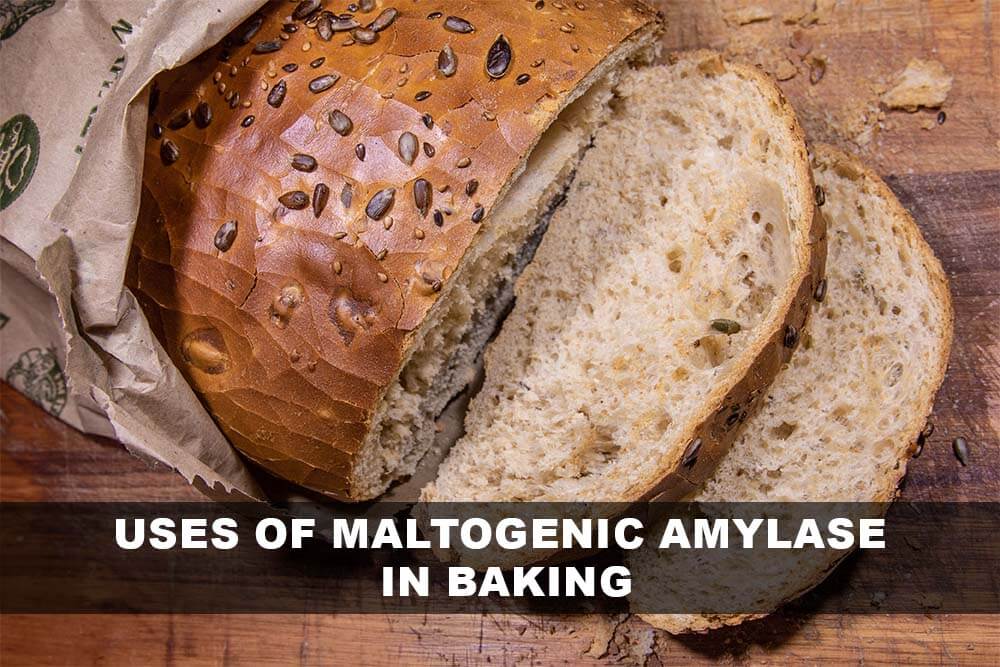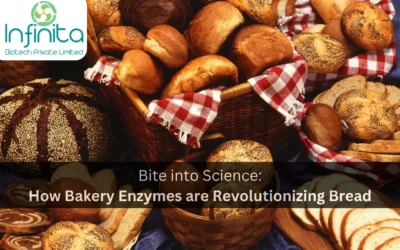The use of enzymes in the baking industry is not new and has been followed for decades. An enzyme is a protein that makes a chemical change in a biological system. In the baking industry, enzymes break starch into maltose, complex sugar into simple sugar, and protein chains. Bakers are buying enzymes to extend the shelf-life of bread. Having said that, there are plenty of enzymes available in the market that bakers use in baking. And one such enzyme is maltogenic amylase. It is an enzyme that breaks down starch into soft sugar. This enzyme plays a crucial role in the entire baking process. So, in this blog, we’re going to walk you through the uses of the maltogenic amylase enzyme in the baking process. But before we talk about the uses of maltogenic amylase, let us give you a detailed overview of it.
What exactly maltogenic amylase is?
In simple words, maltogenic amylase is a hydrolytic enzyme that breaks down the starch into soft sugar. The starch, which maltogenic amylase breaks down gets converted into maltose (a sugar made up of two glucose molecules), thus the name maltogenic. It simply means that the maltogenic amylase breaks the starch into the smallest molecules, thereby making sugar soft and durable. Moreover, this baking enzyme also disintegrates the carbohydrate chain to create maltose. Indeed, maltogenic amylase has a positive impact on bread texture during storage by decreasing amylopectin re-crystallization. Thus, it delays starch retrogradation, which ultimately provides long-lasting bread crumb softness.
Having said that, maltogenic amylase plays a crucial role in the digestive system because it is needed to process starch in your diet. Starch is the main source from which people drive glucose, a primary sugar molecule the body uses for energy.
Why do bakers use Maltogenic amylase in baking?
Thanks to maltogenic amylase, which breaks carbohydrates into their simplest units. Therefore, breaking the carbohydrates into maltose (small sugar molecules) is advantageous. Not only is maltogenic amylase used for breaking starch into sugar, but there are many uses for it. Below we’re going to highlight many reasons why bakers use maltogenic amylase in baking.
-
Good to drive delicious taste
We all love sweet yet tasty food and bread is not an exception. Bakers try to bring the best taste in the bread they make. That’s the reason they use maltogenic amylase that helps them make bread sweeter in taste. They can use this enzyme in lieu of adding or reducing the amount of sugar required in the bread.
-
Makes a spongier bread crumb
What is responsible for fermentation in bread? Most of you will say, yeast. That’s right. But you must know that yeast needs sugar to ferment the bread, which metabolises the sugar and creates carbon dioxide gas and ethanol. Moreover, the yeast can’t metabolise the sugar found in flour. That’s where maltogenic amylase helps yeast do that work. As yeast can easily metabolise maltose, the amalgamation of yeast and amylase leads to good bread rise, and soft, and spongier crumb.
-
Helps extend the shelf life of bread
Who doesn’t love fresh bread coming right from the oven? We all love, right. But what about customers who get it after 1-2 hours of booking. That bread doesn’t remain as fresh as you get it immediately from the oven. That’s why to maintain that freshness in the bread for a long period of time, maltogenic amylase is used in the baking process. This enzyme helps bakers extend the shelf life of bread and make it more tasty and delicious altogether.
-
Extends the bread softness
The soft bread is loved by all. The fact is that the bread easily gets stale after a period of time, which everyone detests eating. The reason behind staling of bread could be the change in the structure of starch present inside the bread. Once the bread starts baking, the starch gelatinizes, which ultimately gives the bread a nice and soft crumb. Over time, as starch recrystallizes it starts trapping water in the bread. This leads to hard and dry bread. Therefore, amylase slows down this recrystallization process and ultimately extends the bread’s softness and elasticity.
-
Keeps bread crust darker and thicker
Another reason why bakers use maltogenic amylase in baking is to keep the bread curt darker and thicker. The crust of bread is formed through the Maillard reaction, a chemical reaction between sugar and amino acids, which occurs at high heat. Due to this the amount of sugar present in the bread becomes limited. As you know that the maltogenic amylase makes sugar, it works by increasing the amount of sugar in the bread for the Maillard reaction. This ultimately leads to a darker and thicker crust. There is no doubt that the darker and thicker crust in bread makes it durable.
-
Helps in mould spore removal
Spoilage is another factor that makes the bread stale and the main cause of bread spoilage is mould. Since mould loves sugar and moisture, bread is full of both. Since keeping the moulds away from bread is somewhat impossible, maltogenic amylase helps keep them away.
So, are you looking for the maltogenic amylase enzymes for baking? Whether you are a restaurant or food chain business, we, at Infinita Biotech, are a renowned Indian Manufacturer and distributor of unique enzyme compositions. Whether you want enzymes for food, beverages, animal feed, agriculture, detergent, and any other industrial use, we have a solution for all. Our sustainable and eco-friendly enzyme solutions will help you make any food item delicious and durable. Moreover, we have more than 30 years of experience in the enzyme industry. Our high-quality products have met customer needs and provided benefits that can’t be obtained through traditional chemicals and processes. Connect with us now to get the best enzyme solutions.



